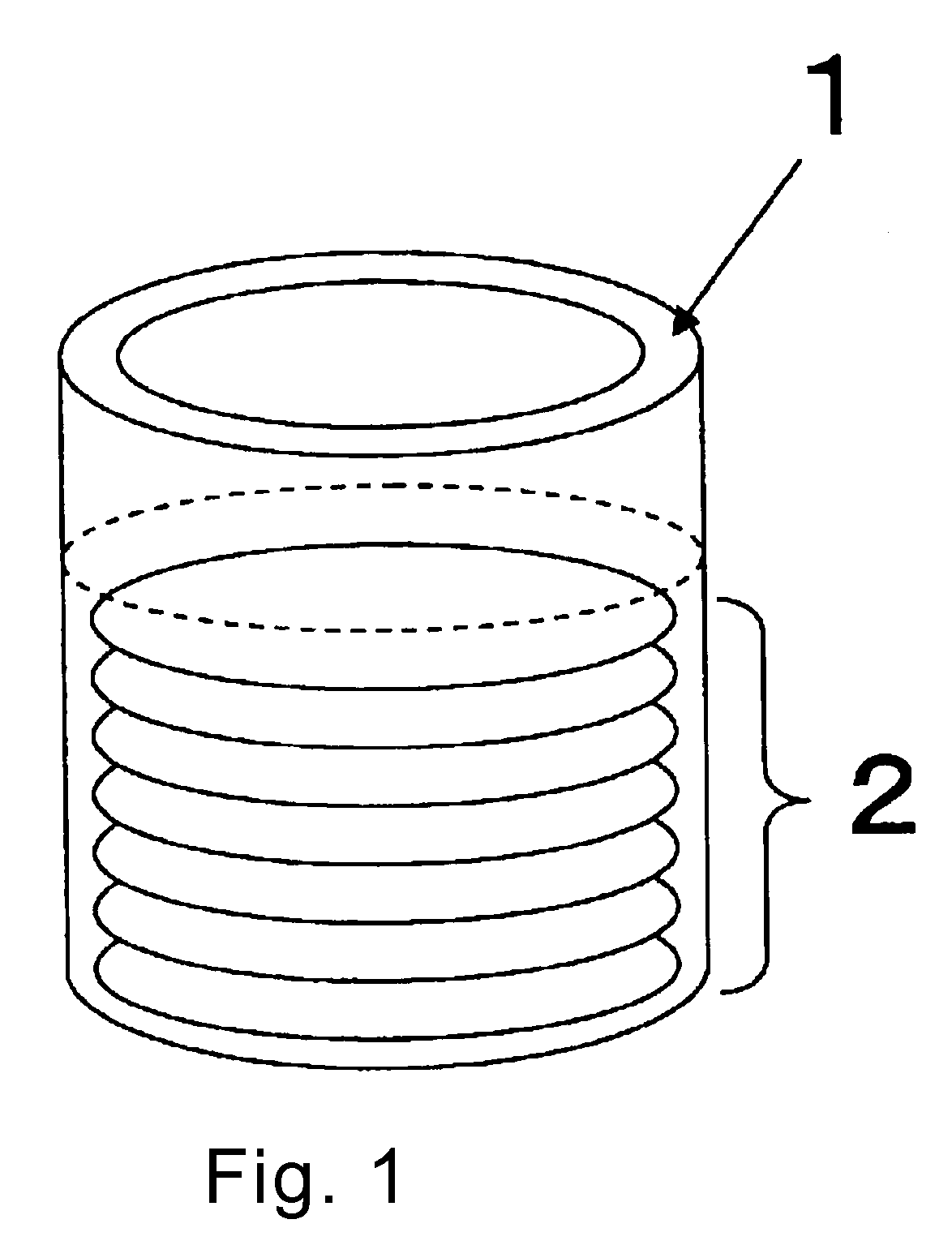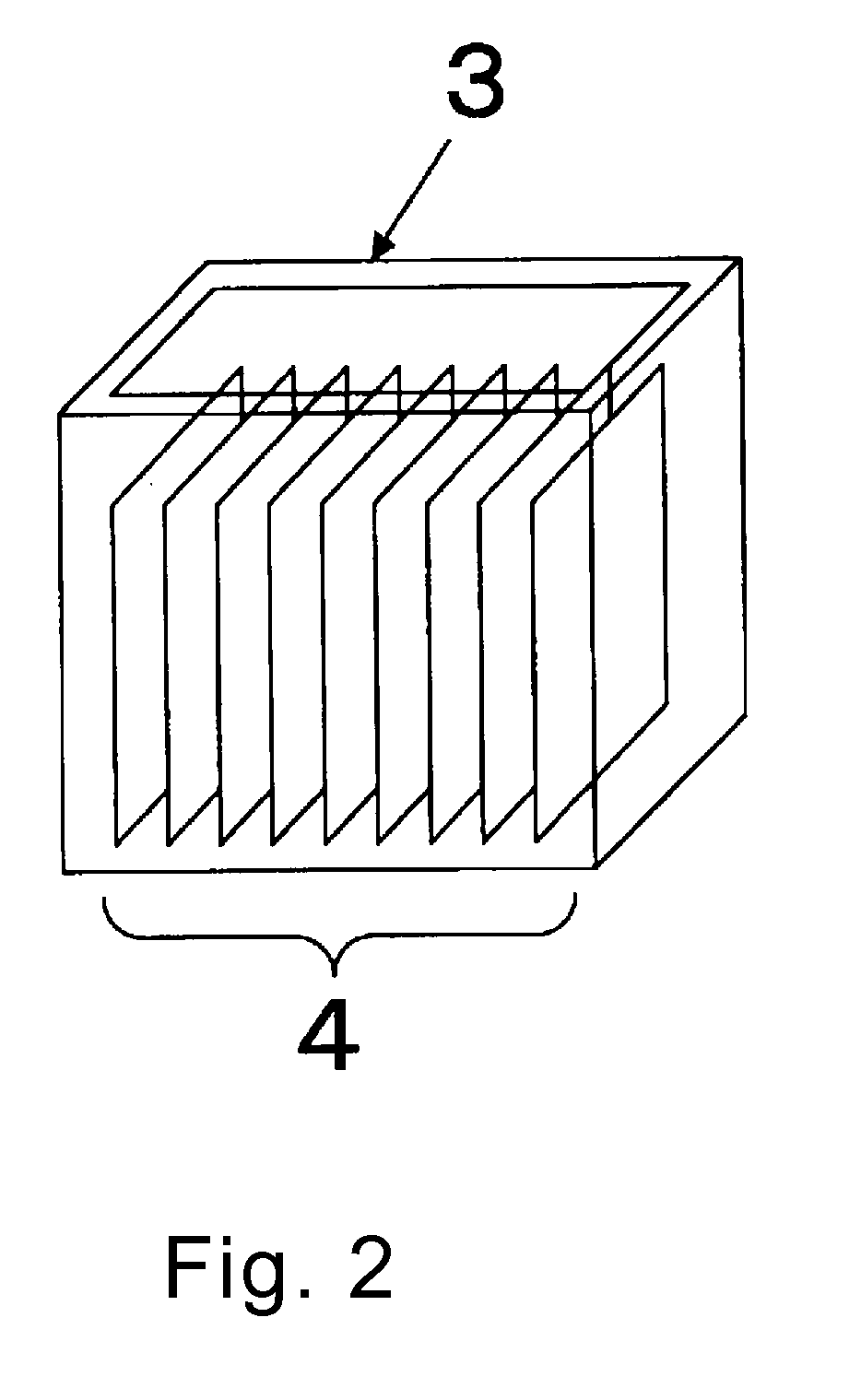Blood platelet induction method
a technology of platelet induction and platelet plate, which is applied in the field of platelet production technology, can solve the problems of current platelet transfusion that relies on volunteer donors, virus infection risk, burden on donors, etc., and achieve the effect of producing in vitro
- Summary
- Abstract
- Description
- Claims
- Application Information
AI Technical Summary
Benefits of technology
Problems solved by technology
Method used
Image
Examples
example 1
Culture of Hematopoietic Stem Cells Using Composite Membrane
[0141]A three-layer web (spunbond long fiber web / melt-blown short fiber web / spunbond long fiber web) produced in the same manner as described in Examples 1 to 4 of WO2004 / 094136A1 was thermally compression bonded through a flat roll to obtain a polyethylene terephthalate three-layer nonwoven fabric. As a result of observation using an optical microscope and a scanning electron microscope, the nonwoven fabric was observed to have a structure in which long fibers (fine fibers) having an average fiber diameter of 15 μm and short fibers (ultrafine fibers) having an average fiber diameter of 1.6 μm were entangled and mixed.
[0142]The nonwoven fabric had an average flow pore size of 10.4 μm, a total weight per unit area (weight of fibers per m2 of nonwoven fabric) of 20 g / m2, and a thickness of 0.034 mm. The ratio of the weight of the fine fibers to the total weight of the fine fibers and the ultrafine fibers was...
example 2
Culture of Hematopoietic Stem Cells Using Only Nonwoven Fabric
[0158]The nonwoven fabric used in 1) of Example 1 was cut into a disc shape with diameter of 25 mm, and bonded to one end face of a glass ring (inner diameter: 22 mm, outer diameter: 25 mm, height: 10 mm) to obtain a cup-shaped vessel. The cup-shaped vessel was sterilized at 121° C. for 20 minutes using an autoclave. A PSU chloroform solution (polymer concentration: 17%) was used as an adhesive.
[0159]The cup-shaped vessel containing the nonwoven fabric was immersed in the well No. 4 (including the same culture solution as that in the well Nos. 1 to 3) of the 6-well culture plate provided in 4) of Example 1 so that the nonwoven fabric was positioned at the bottom, and 500 Green Mouse derived hematopoietic stem cells collected in the same manner as in Example 1 were cultured at 5% CO2 and 37° C. Since the nonwoven fabric allowed the hematopoietic stem cells to easily pass through in this case, 2 ml of the culture solution w...
example 3
Promotion of Platelet Release by Applying Shear Stress
[0164]Hematopoietic stem cells were cultured in a cup-shaped incubator for 10 days in the same manner as in Example 1-4). When megakaryocytes were being produced, the incubator was placed in a plastic culture dish with a diameter of 10 cm (containing 10 ml of a culture solution prepared by adding 10% bovine serum, SCF (50 ng / ml), TPO (10 ng / ml), and VEGF (10 ng / ml) (all manufactured by GIBCO) to an RPMI1640 base medium (manufactured by Sigma)). At the time, two capillary-blood tubes were apposed at the bottom of the culture dish, and the cup-shaped incubator was placed thereon so that a clearance gap of about 2 mm was formed between the culture dish and the cup-shaped incubator.
[0165]A stirrer bar having a length of 2 cm was provided at a position about 3 cm away from the cup-shaped incubator placed in the culture dish. A liquid flow was caused to occur in the culture solution by a rotational speed of 200 rpm so that a fluid shea...
PUM
| Property | Measurement | Unit |
|---|---|---|
| pore size | aaaaa | aaaaa |
| pore size | aaaaa | aaaaa |
| porosity | aaaaa | aaaaa |
Abstract
Description
Claims
Application Information
 Login to View More
Login to View More - R&D
- Intellectual Property
- Life Sciences
- Materials
- Tech Scout
- Unparalleled Data Quality
- Higher Quality Content
- 60% Fewer Hallucinations
Browse by: Latest US Patents, China's latest patents, Technical Efficacy Thesaurus, Application Domain, Technology Topic, Popular Technical Reports.
© 2025 PatSnap. All rights reserved.Legal|Privacy policy|Modern Slavery Act Transparency Statement|Sitemap|About US| Contact US: help@patsnap.com



